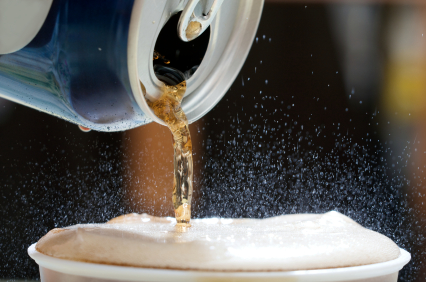 A version of this article originally appeared on Transportation Nation.
A version of this article originally appeared on Transportation Nation.
Subway and bus ads are the latest battleground between New York Mayor Michael Bloomberg’s health department and soda makers. The newly formed New York City Beverage Association is taking a huge mass transit ad buy as part of a $1 million campaign to rebut the city’s claim that soda is unhealthy.
For months, the city has been running public service announcements linking sugary drinks to mountains of fat and waterfalls of sugar, including a graphic video (below) that claims drinking a can of soda a day can add 10 pounds in a year by showing a man pouring fat out of a can of soda and drinking it.
Health Department Commissioner Thomas Farley elaborated on those objections in a statement to Transportation Nation: “Americans are literally drinking themselves fat, consuming 200-300 more calories daily than 30 years ago, with the largest single increase due to sugary drinks.”
Farley also defended the city’s anti-soda campaign in light of the Beverage Association’s public relations offensive. “The Health Department will continue providing New Yorkers with the facts about the dangers of this overconsumption.”
The Beverage Association is fighting back with ads of its own on 570 subway cars, 75 buses, and 120 subway platforms. The ads claim soda makers are fighting obesity and other health risks by offering low-calorie drinks, smaller serving sizes, and clearly displayed calorie counts.
Despite the timing of the ad campaign, association spokesman Stefan Friedman insisted his industry isn’t quarreling with the health department.
“Look, we face some issues with the city but it’s important for us to tell our story,” he said. “All evidence is clear that the obesity epidemic comes from a number of different sources. Sugar-sweetened beverages comprise just 5 percent of the American diet.”
Friedman added the beverage industry directly employs more than 8,000 New Yorkers and contributes $1.5 billion dollars to the local economy.




